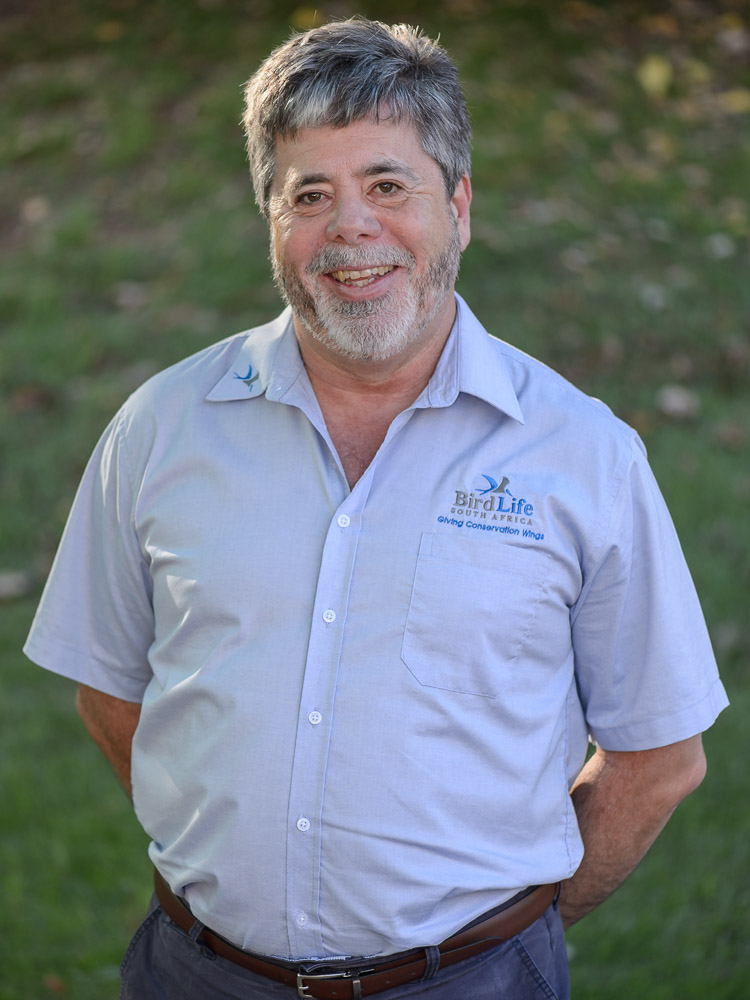BirdLife South Africa is a 5000-member environmental NGO that is the country’s partner of BirdLife International. Its mission is to strive to conserve birds, their habitats and biodiversity through scientifically-based programmes, through supporting the sustainable and equitable use of natural resources and by encouraging people to enjoy and value nature.
Residing within BirdLife South Africa’s structure is its Seabird Conservation Programme with a Cape Town-based team of six led by Alistair McInnes. Its work includes preventing bycatch of seabirds in fisheries via its involvement with BirdLife International’s Albatross Task Force (led by Andrea Angel), protecting endangered coastal seabirds (notably the globally Endangered African Penguin Spheniscus demersus), and the Marion Island mouse eradication project.

Scalped! A Grey-headed Albatross chick on Marion Island will not survive the overnight attacks by mice, photograph from the FitzPatrick Institute
Mice were inadvertently introduced to Marion Island during the 1900s, and have since wreaked havoc on the island’s ecosystem (click here). BirdLife South Africa is supporting the South African Department of Environment, Forestry and Fisheries (DEFF) to launch an island restoration project, which will aim to rid the island of mice. To this end the NGO operates a “Mouse Free Marion” website that is collecting funds via a “sponsor a hectare” campaign.
BirdLife South Africa’s Chief Executive Officer, Mark Anderson writes to ACAP Latest News in support of World Albatross Day: “Sixteen species of albatrosses occur in South Africa’s waters, all of which are listed in the regional and global Red Data Lists. BirdLife South Africa and its Albatross Task Force have contributed towards their survival by reducing albatross mortalities in the trawl fishery by 99%, from an estimated 9000 to less than 100 killed a year. As we prepare to celebrate World Albatross Day on 19 June 2020 (with the theme “Eliminating Island Pests”), we are committing to the restoration of Marion Island and the conservation of four iconic albatross species which breed on this sub-Antarctic island, including one fifth of the global population of Wandering Albatrosses that breed there.”

Mark Anderson, CEO, BirdLife South Africa
With thanks to Mark Anderson, Andrea Angel and Alistair McInnes.
Selected References:
Dilley, B.J., Schoombie, S., Schoombie, J. & Ryan, P.G. 2015. ‘Scalping’ of albatross fledglings by introduced mice spreads rapidly at Marion Island. Antarctic Science 28: 73-80.
Jones, M.G.W. & Ryan, P.G. 2010. Evidence of mouse attacks on albatross chicks on sub-Antarctic Marion Island. Antarctic Science 22: 39-42.
Maree, B.A., Wanless, R.M., Fairweather, T.P., Sullivan, B.J. & Yates, O. 2014. Significant reductions in mortality of threatened seabirds in a South African trawl fishery. Animal Conservation 17: 520-529.
Parkes, J. 2014. Eradication of House Mice Mus musculus from Marion Island: a Review of Feasibility, Constraints and Risks. In: Wanless, R.M. (Ed.). BirdLife South Africa Occasional Report Series No. 1. Johannesburg: BirdLife South Africa. 27 pp.
Preston, G.R., B.J. Dilley, J. Cooper, J. Beaumont, L.F. Chauke, S. L. Chown, N. Devanunthan, M. Dopolo, L. Fikizolo, J. Heine, S. Henderson, C.A. Jacobs, F. Johnson, J. Kelly, A.B. Makhado, C. Marais, J. Maroga, M. Mayekiso, G. McClelland, J. Mphepya, D. Muir, N. Ngcaba, N. Ngcobo, J.P. Parkes, F. Paulsen, S. Schoombie, K. Springer, C. Stringer, H. Valentine, R.M. Wanless & P.G. Ryan 2019. South Africa works towards eradicating introduced house mice from sub-Antarctic Marion Island: the largest island yet attempted for mice. pp. 40-46. In: Veitch, C.R., Clout, M.N., Martin, A.R., Russell, J.C. & West, C.J. (Eds). Island Invasives: Scaling up to meet the Challenge. Gland, Switzerland: IUCN. xiv + 734 pp.
John Cooper, ACAP Information Officer, 25 October 2019

 English
English  Français
Français  Español
Español